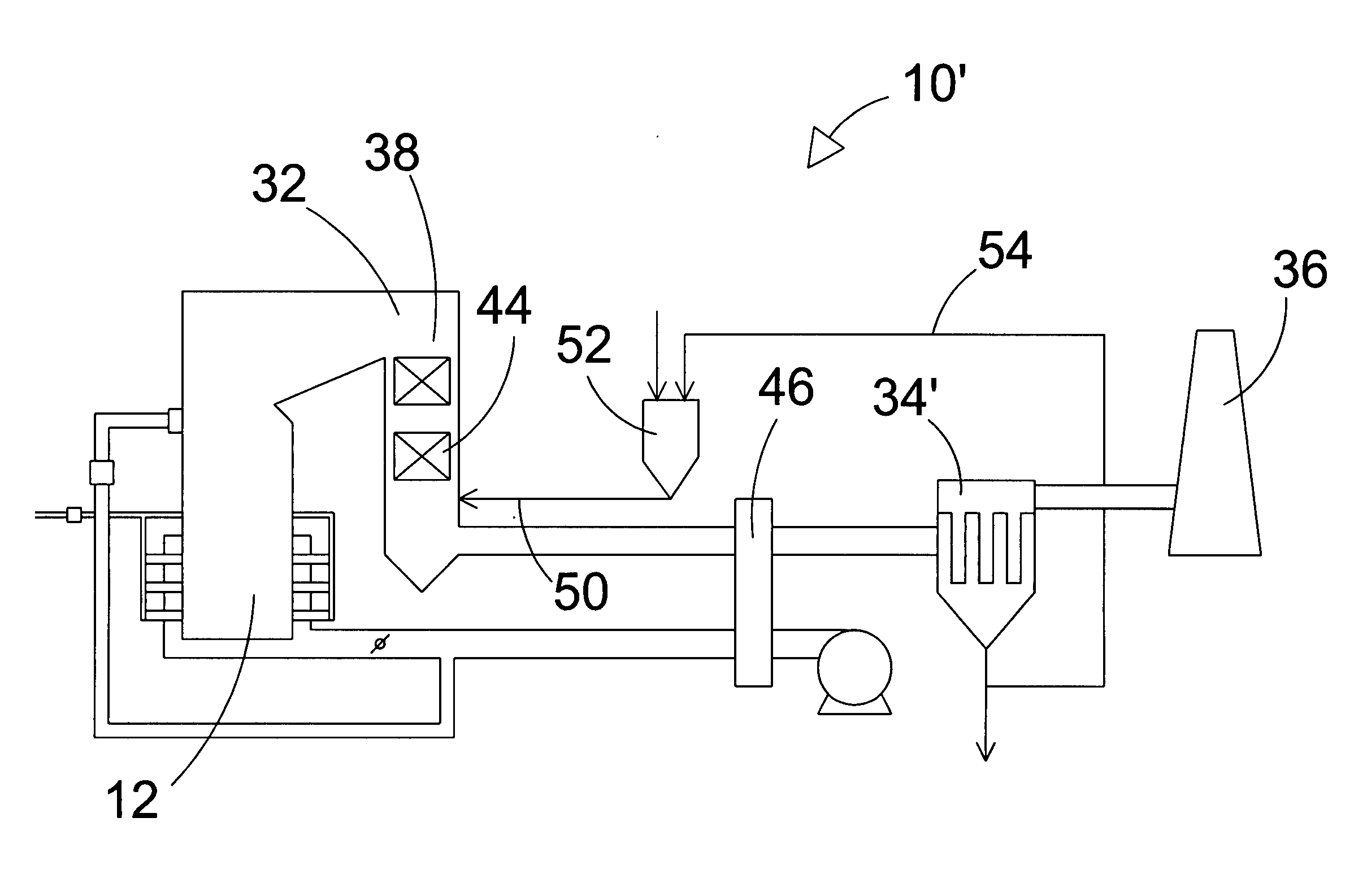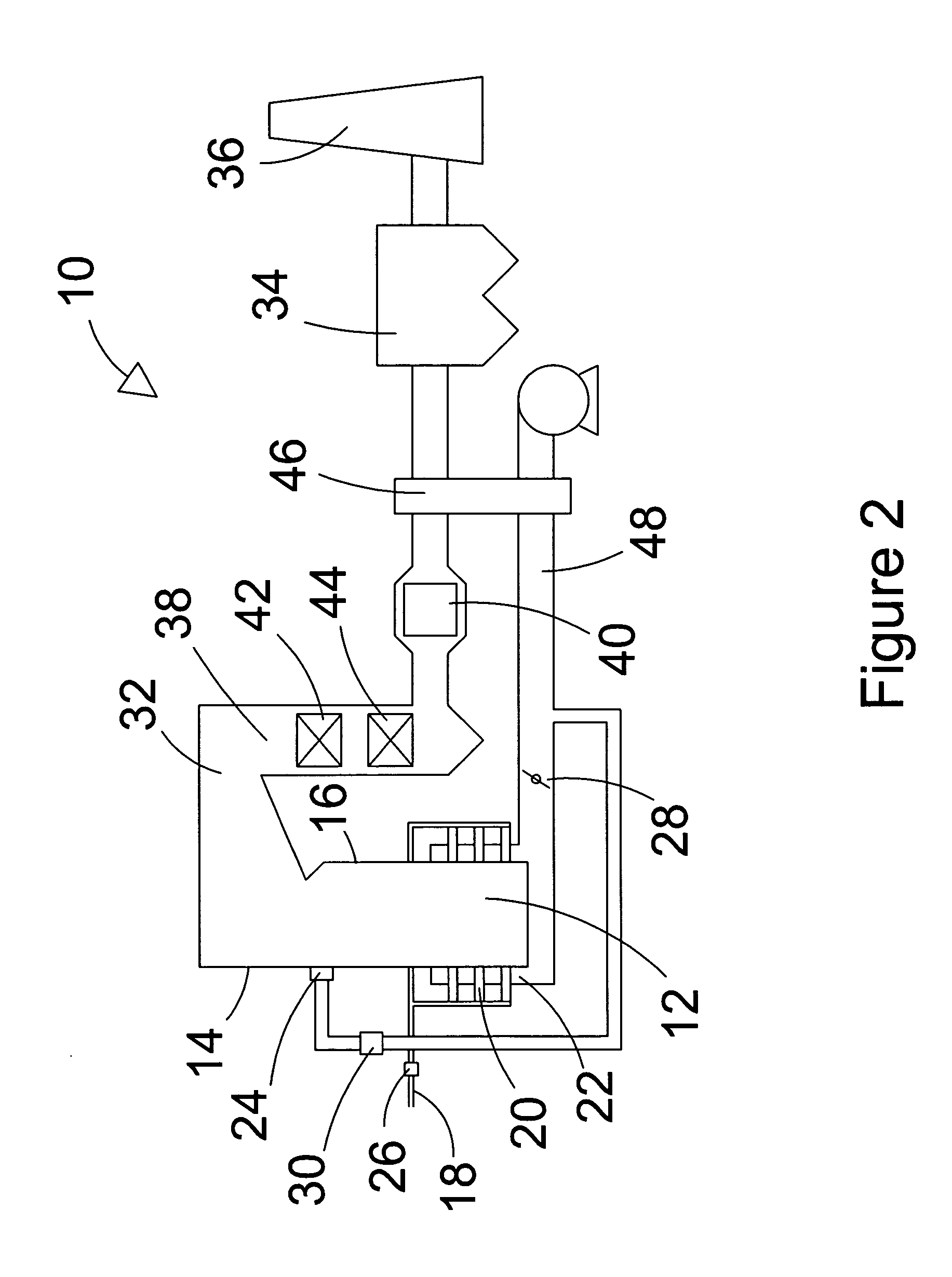Catalyst, a method of using a catalyst, and an arrangement including a catalyst, for controlling NO and/or CO emissions from a combustion system without using external reagent
a technology of catalyst and arrangement, which is applied in the direction of metal/metal-oxide/metal-hydroxide catalyst, antimony compound, metal/metal-oxide catalyst, etc., can solve the problem of increasing co emissions and unburned carbon in the ash, and not being able to take full advantage of optimizing the amount of excess air, etc. problem, to achieve the effect of low nox level of the combustion system and high combustion efficiency
- Summary
- Abstract
- Description
- Claims
- Application Information
AI Technical Summary
Benefits of technology
Problems solved by technology
Method used
Image
Examples
Embodiment Construction
[0035]In the following, there are described results of bench scale tests of several exemplary catalysts, which were made to study their NO, CO and O2 conversion rates as a function of temperature. The tests were performed by letting a constant stream of simulated flue gas, containing initially 260 ppm NO, 520 ppm CO, 3.0% O2, 14.0% CO2 and 83% N2, to flow through a heated catalyst particle bed. The conversion rates were obtained by measuring the changes of the gas composition taking place across the catalyst bed.
[0036]Catalysts used in the tests were prepared by using an impregnation method with either activated carbon (AC) or activated alumina (AA) particles, having a particle size of 1-2 mm, as substrate. Reagent grade chemicals of metal nitrates were dissolved in 60° C. distilled water, and then support material particles were added while the solution was constantly stirred. The solution was evaporated for a few hours to obtain catalysts that were dry to touch. Activation of the ...
PUM
| Property | Measurement | Unit |
|---|---|---|
| Temperature | aaaaa | aaaaa |
| Temperature | aaaaa | aaaaa |
| Temperature | aaaaa | aaaaa |
Abstract
Description
Claims
Application Information
 Login to View More
Login to View More - Generate Ideas
- Intellectual Property
- Life Sciences
- Materials
- Tech Scout
- Unparalleled Data Quality
- Higher Quality Content
- 60% Fewer Hallucinations
Browse by: Latest US Patents, China's latest patents, Technical Efficacy Thesaurus, Application Domain, Technology Topic, Popular Technical Reports.
© 2025 PatSnap. All rights reserved.Legal|Privacy policy|Modern Slavery Act Transparency Statement|Sitemap|About US| Contact US: help@patsnap.com



